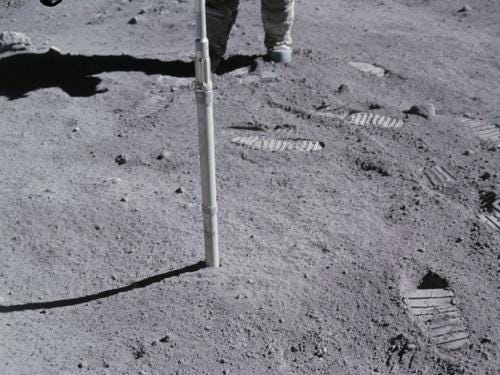Video: 3D Printing With Moon Rocks
December 26, 2012

As we showed you in a recent slideshow, some NASA scientists envision astronauts making whatever they need out of local materials on Mars or the moon via 3D printing. While technology from organizations like Contour Crafting has made this theoretically possible, now, Washington State University (WSU) engineers have actually used moon rocks to print some simple-shaped objects -- on Earth.
Real moon rocks are too rare, so researchers are using an imitation moon rock called lunar regolith simulant. Regolith is a mixture of loose dust, rock, and soil that covers solid bedrock on earth, as well as other planets, the moon, and some asteroids. The simulant is formulated to approximate the real lunar regolith's chemical and mineral properties. There are several versions. The WSU team used about 10 lb of one version that contains silicon, aluminum, calcium, iron, and magnesium oxides.

A team that includes Amit Bandyopadhyay and Susmita Bose, professors at the university's School of Mechanical and Materials Engineering, has demonstrated the printing of parts from the raw, artificial moon rock. NASA is working with several organizations, including Contour Crafting, to develop the technology for fabricating simple tools or replacement parts, but Bandyopadhyay's group is the first to demonstrate the ability.
Previously, Bandyopadhyay and Bose had used 3D printing to create bone-like materials for use in orthopedic implants. Their current work uses Laser Engineering Net Shaping (LENS) technology, specifically, LENS-750 systems. These are based on laser sintering, the most common additive manufacturing method. The team published its results in an article in the Rapid Prototyping Journal.
According to the article abstract, the team produced dense parts with no macroscopic defects, which they characterized to evaluate how laser processing affected the lunar regolith simulant's microstructure, constituent phases, and chemistry. Characterization was done using X-ray diffraction, differential scanning calorimetry, scanning electron microscope, and X-ray photoelectron spectroscopy.
Although the laser processing did cause marginal changes in the material's composition, after some trial and error, the researchers managed to produce parts that did not crack when they solidified.
The team has sent its results to NASA. Other team members include Vamsi Krishna Balla, also with WSU's School of Mechanical and Materials Engineering; Luke B. Roberson, of NASA's Kennedy Space Center; Gregory W. O'Connor, of Amalgam Industries; and Steven Trigwell, of ASRC Aerospace Corp. The research was supported by a $750,000 W.M. Keck Foundation grant.
In the video below, Bandyopadhyay shows the regolith material and explains that the technology can also be used onsite to repair broken parts. The achievement, he says in the video, is a first-generation work that will probably not be ready for commercial use for another 50 years or so.
I suspect it may not take that long, considering how fast this technology area is advancing. NASA is already working on 3D printing rocket engine parts, and other researchers have figured out how to 3D print entire personal electronic devices. The two biggest challenges in printing objects from moon rocks seem to be figuring out the best combination of laser sintering processing and moon rock material, plus, making small printers that will work in a zero-gravity environment.
Related posts:
About the Author(s)
You May Also Like



